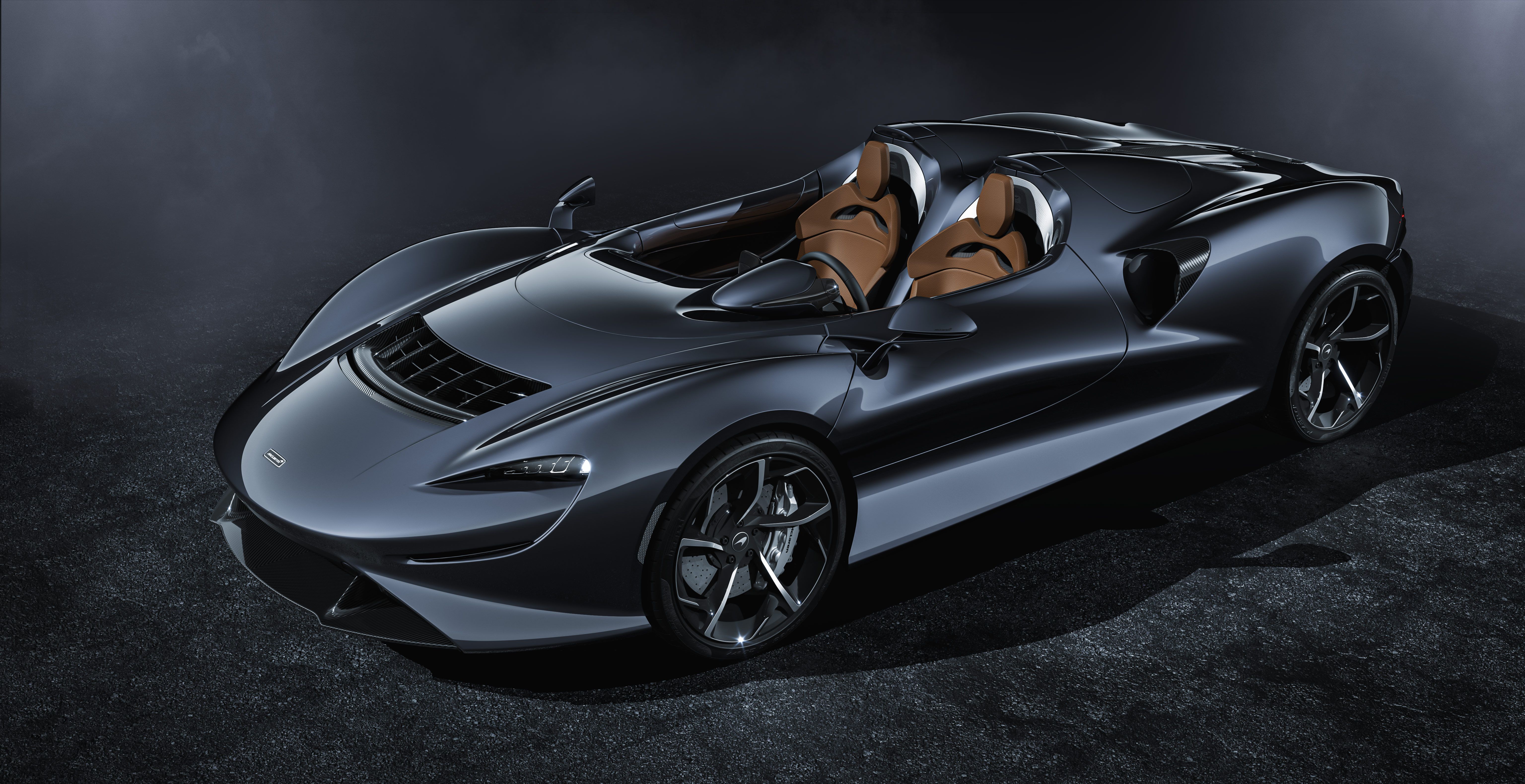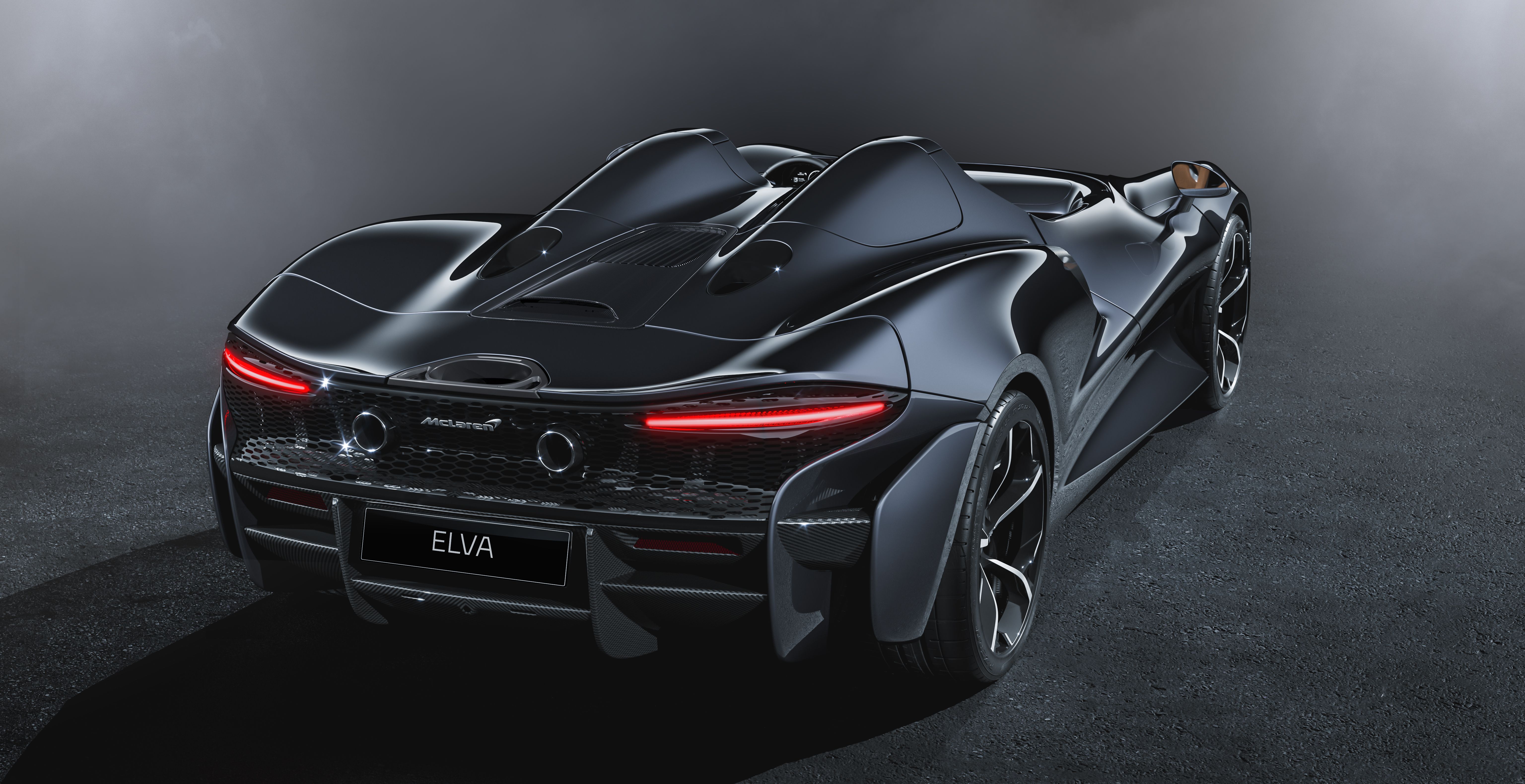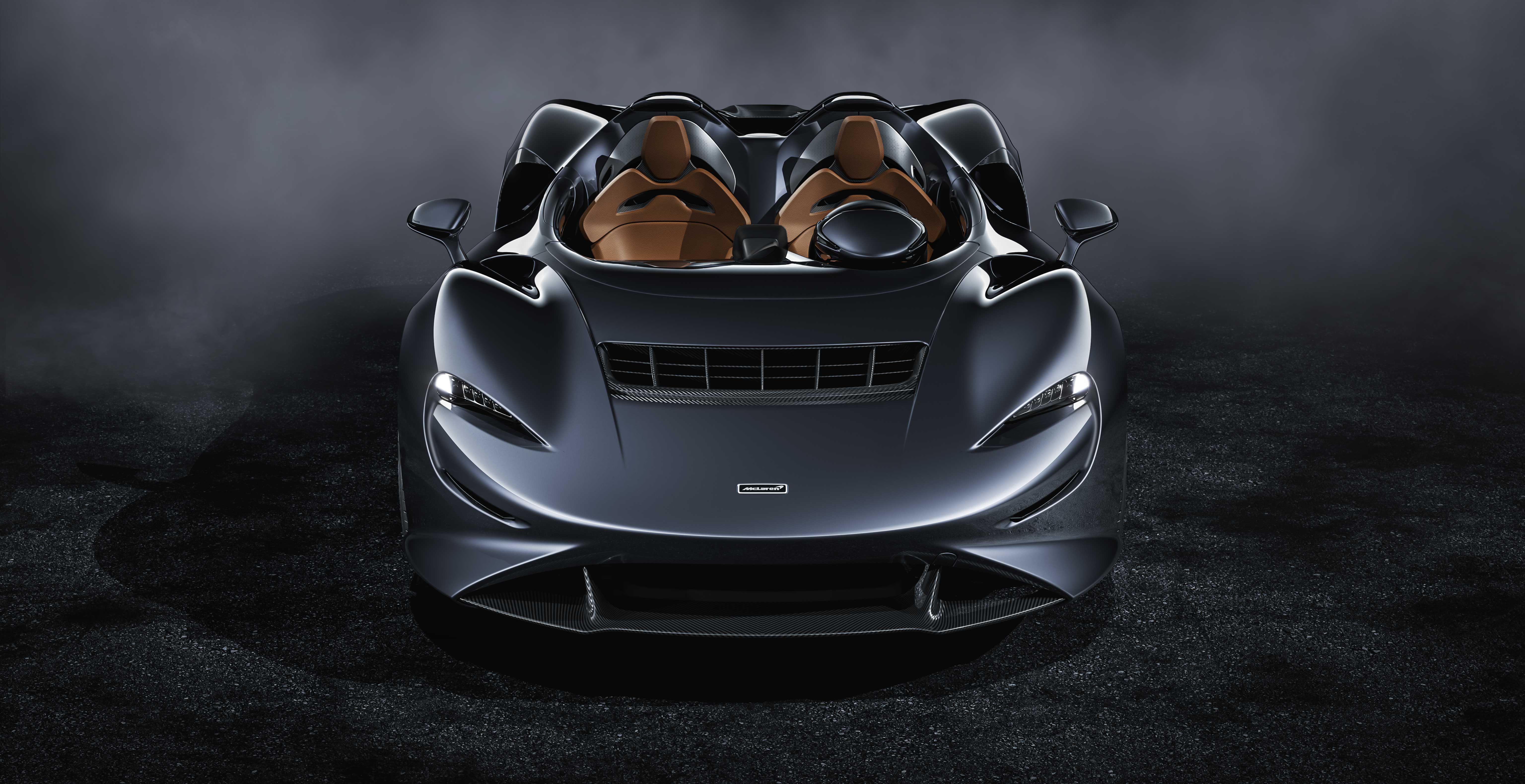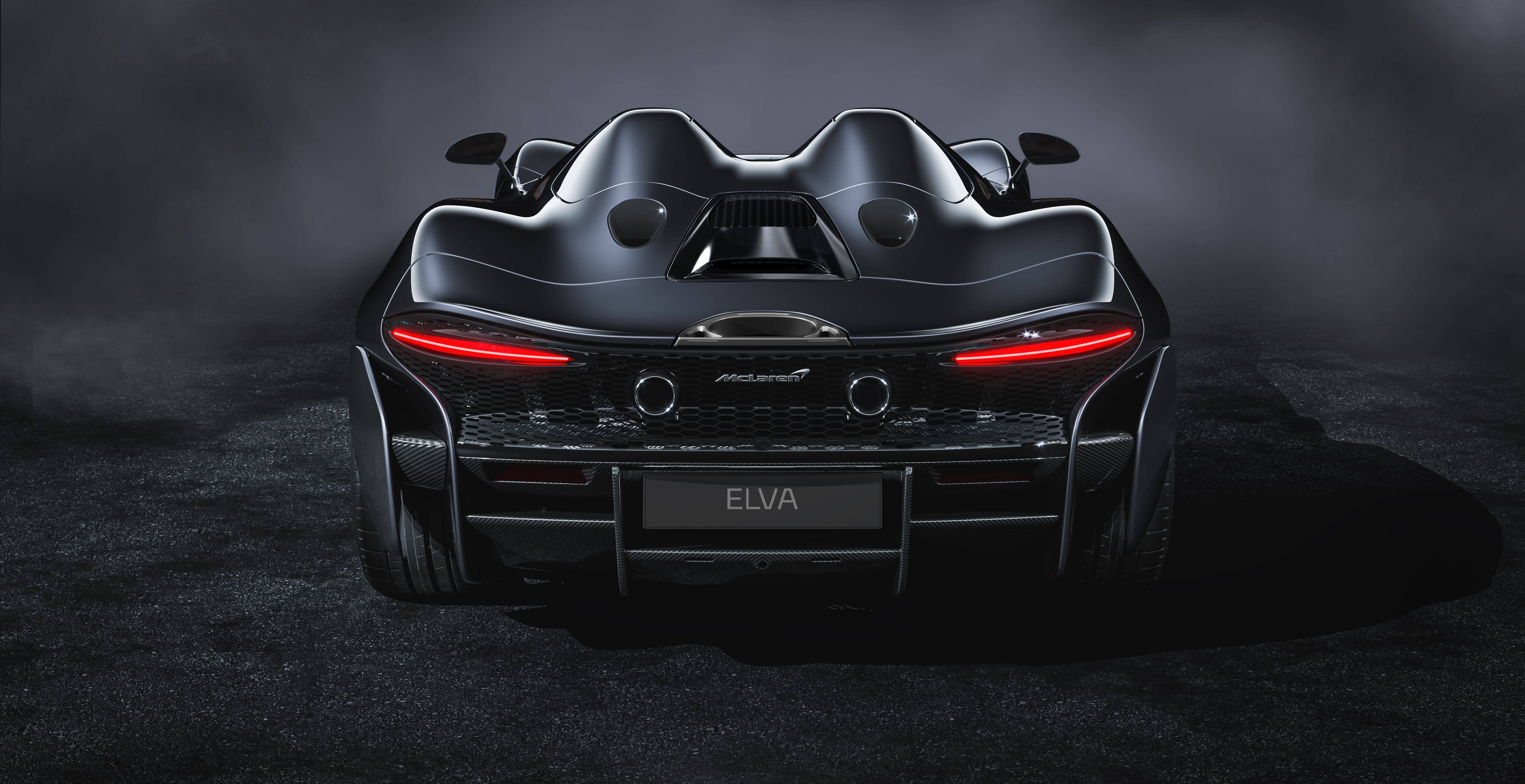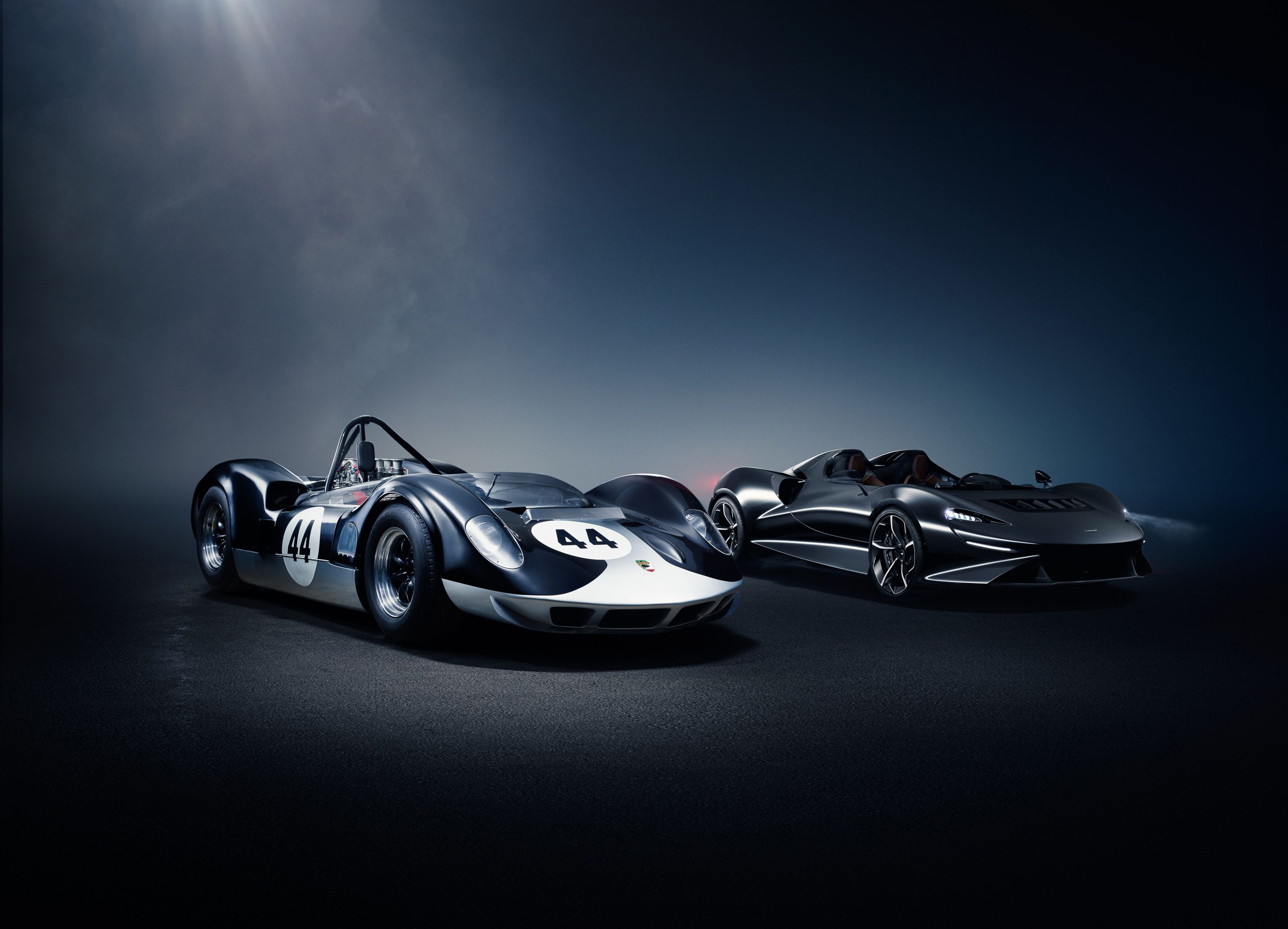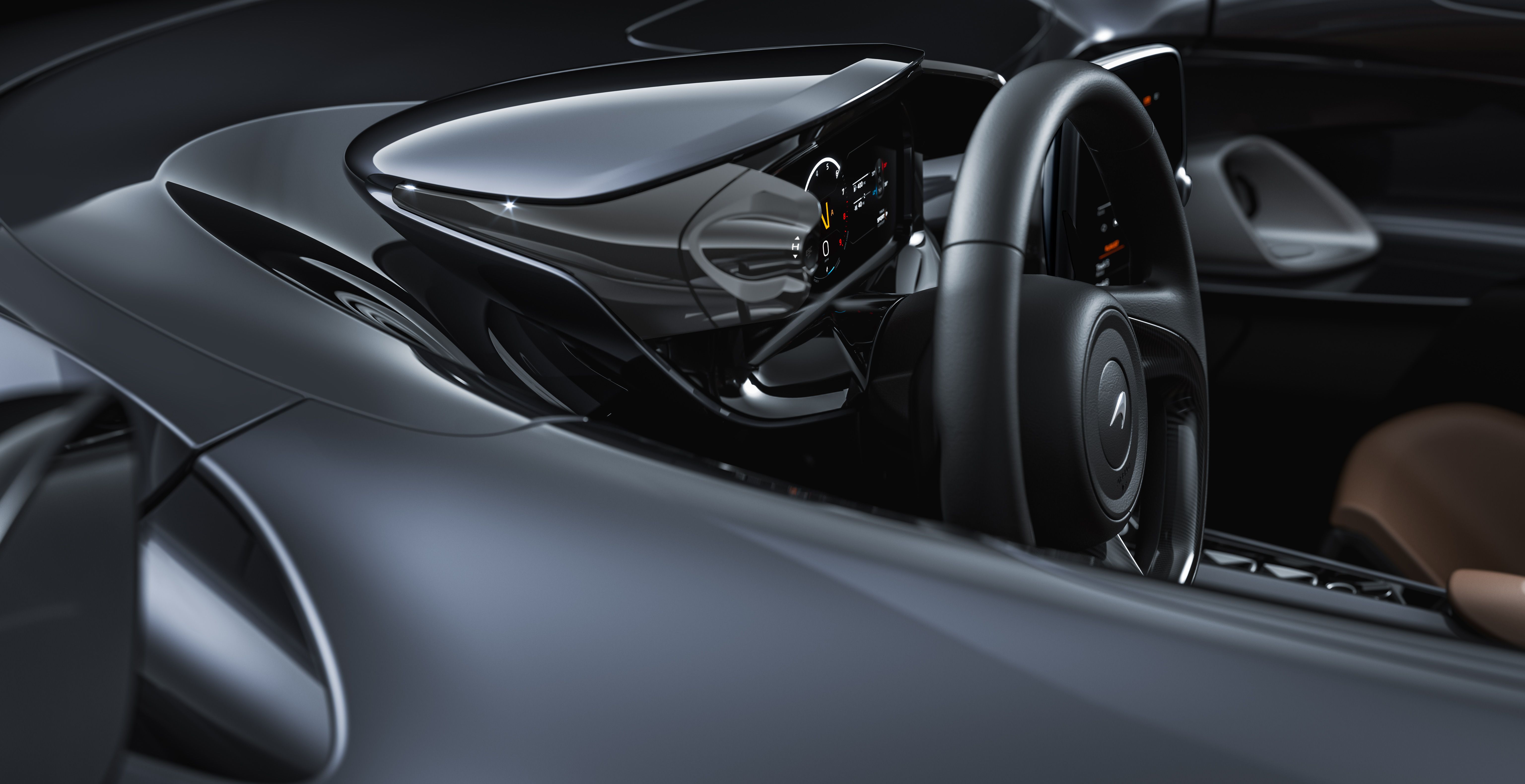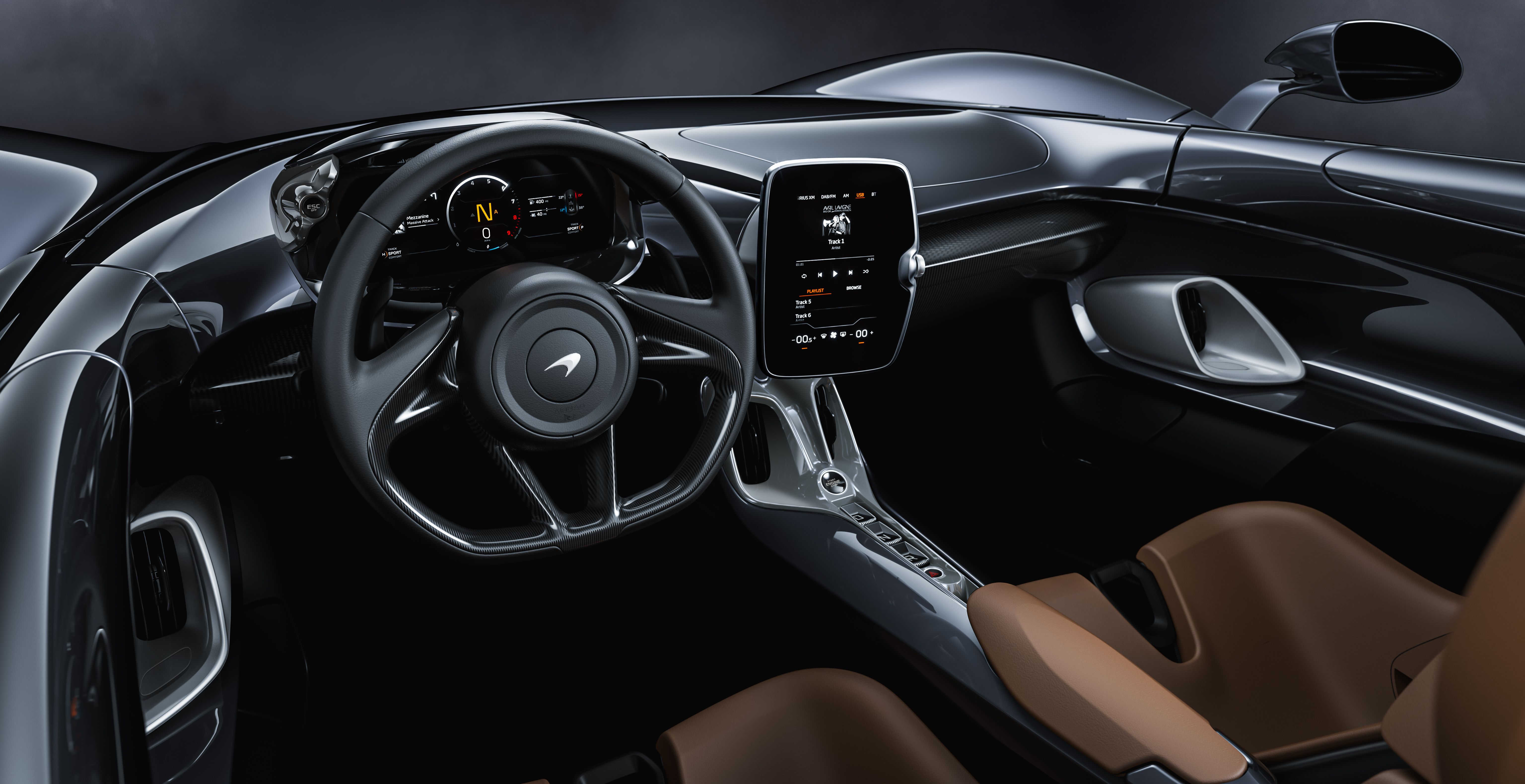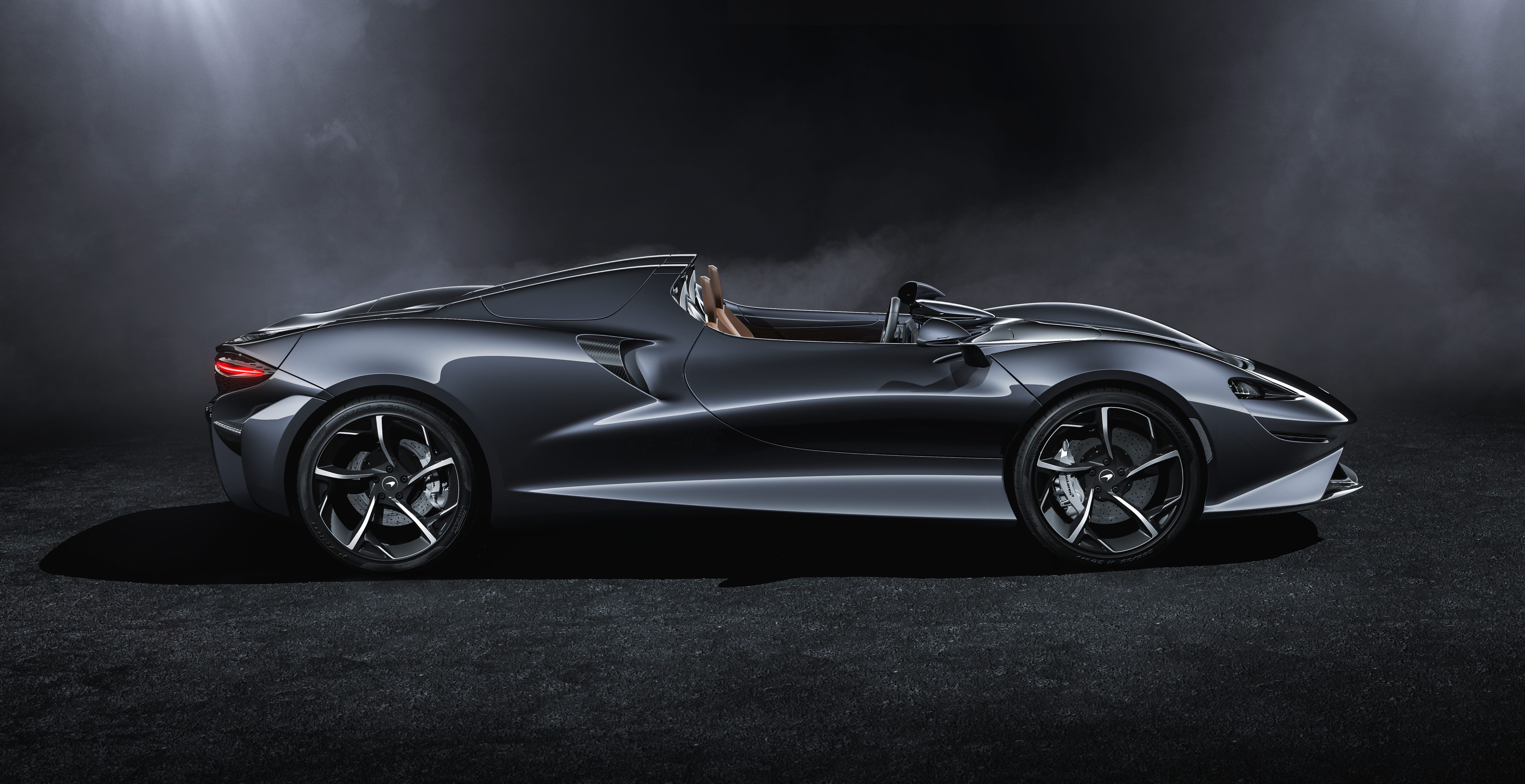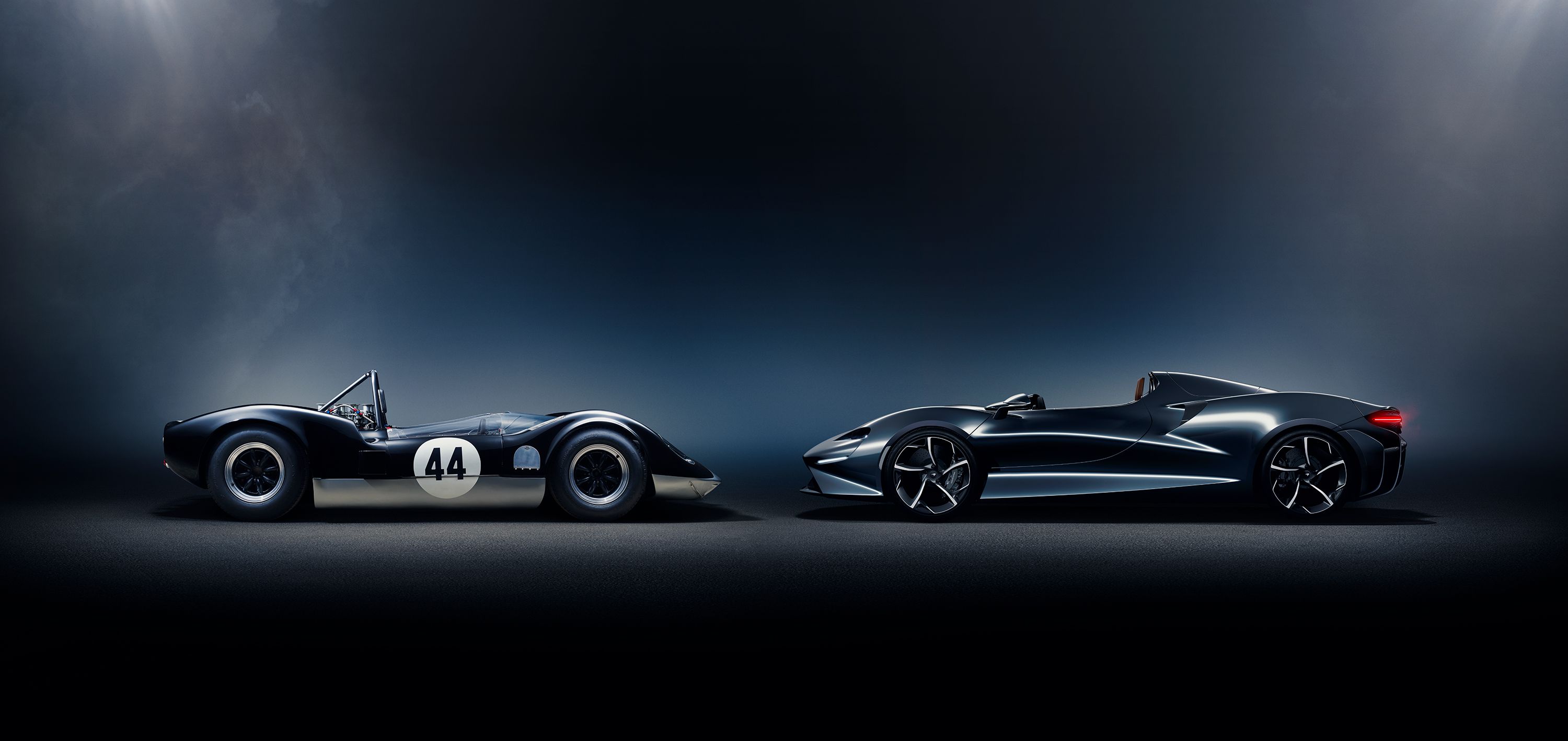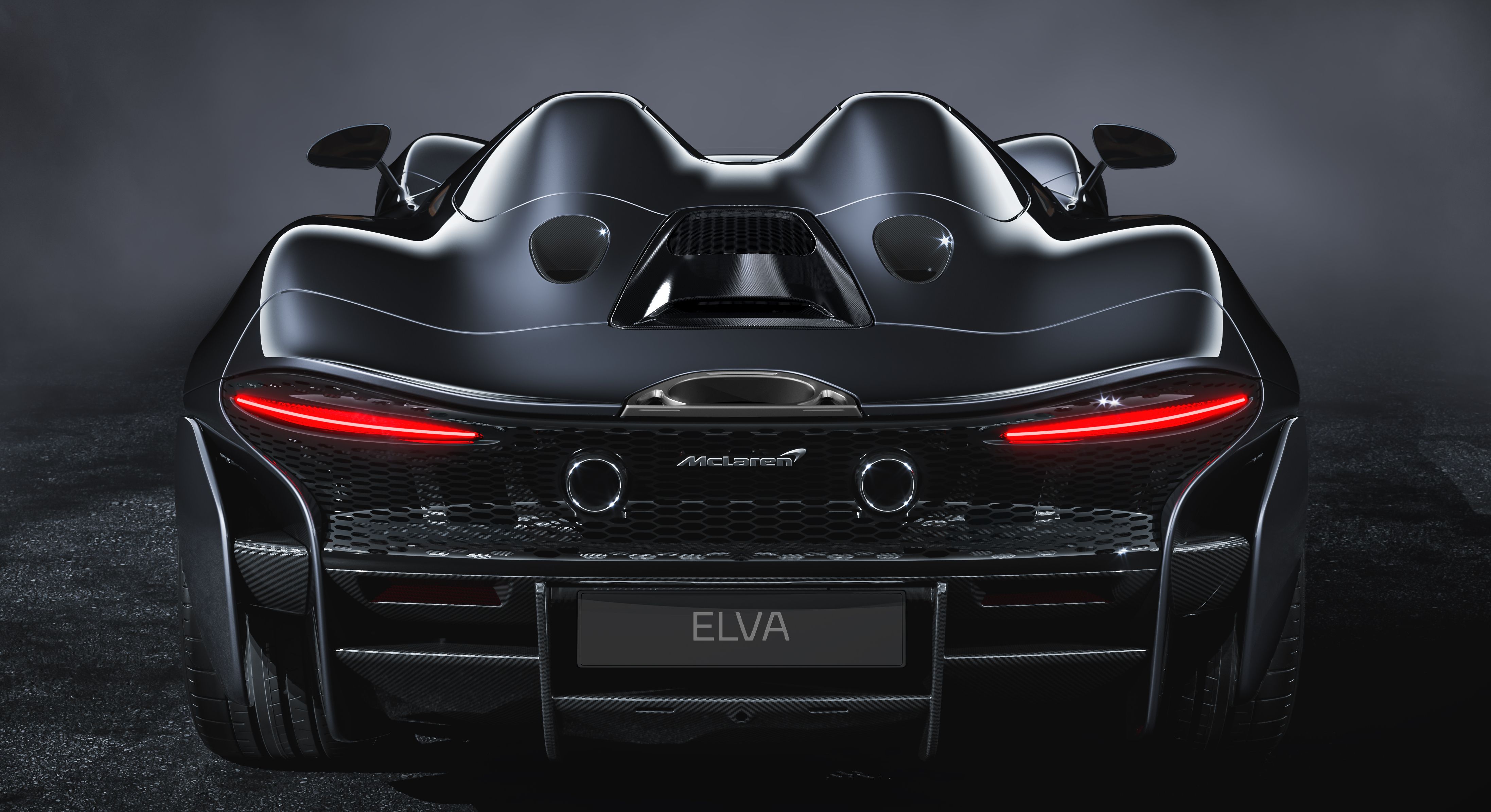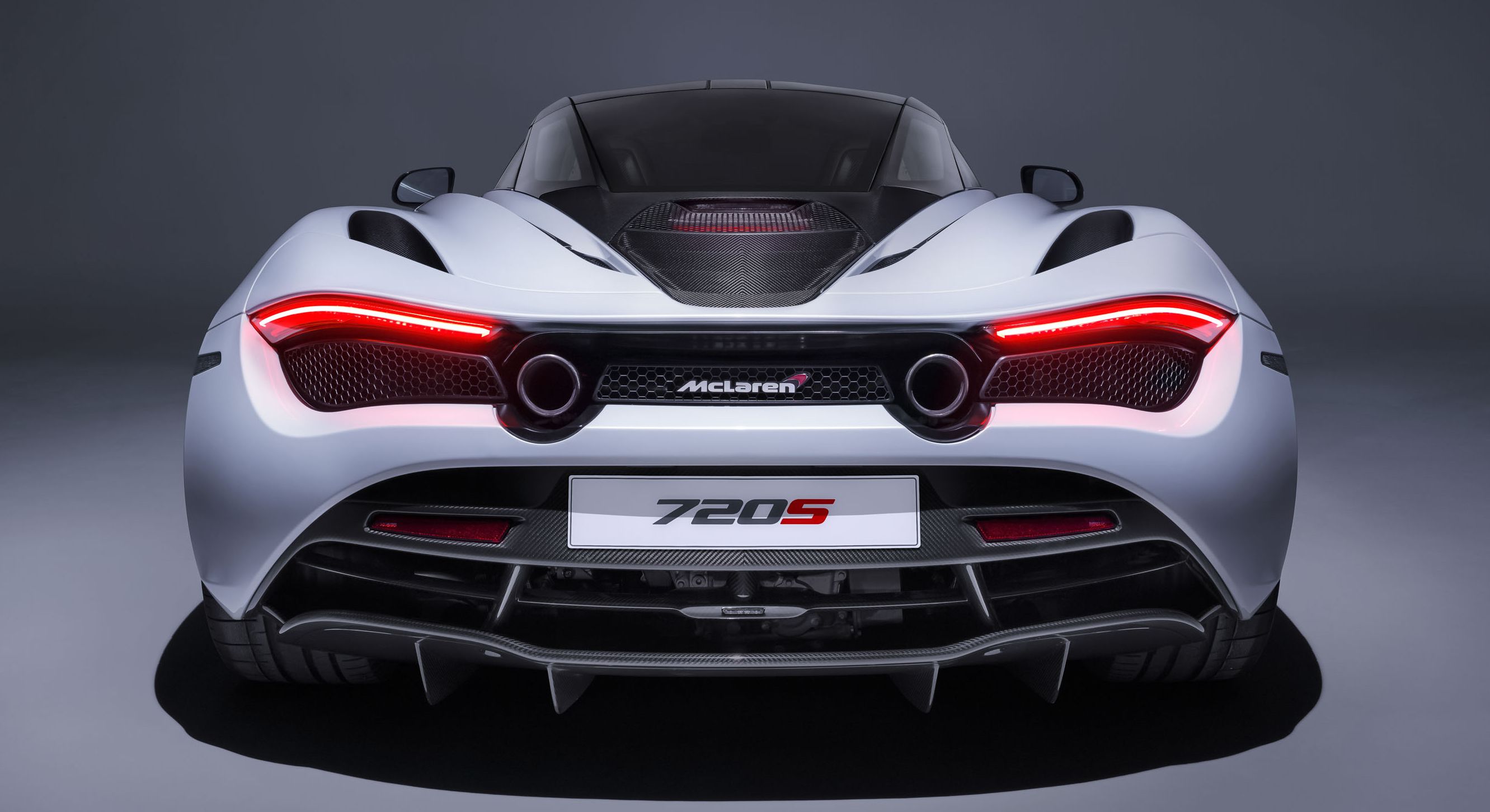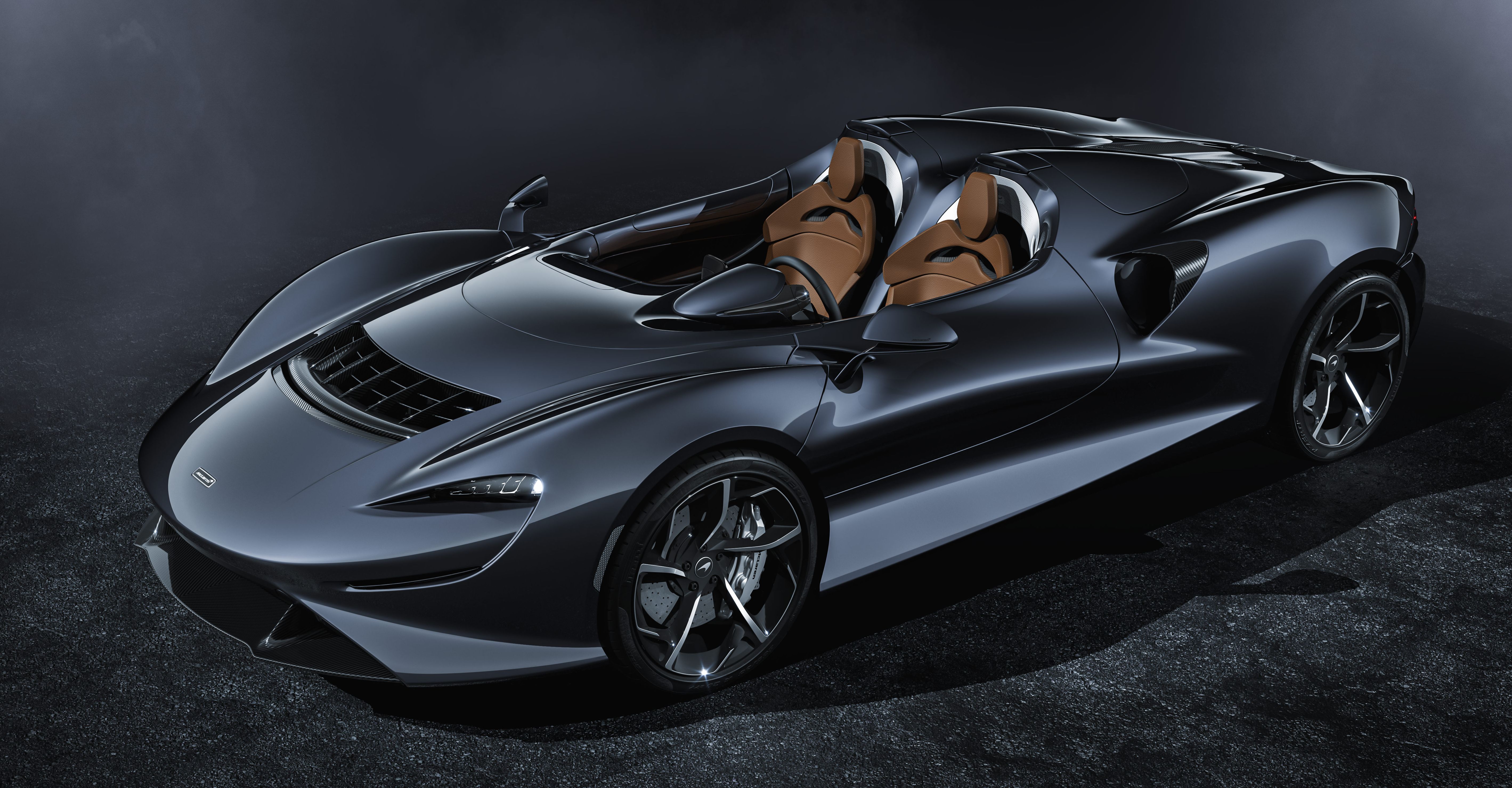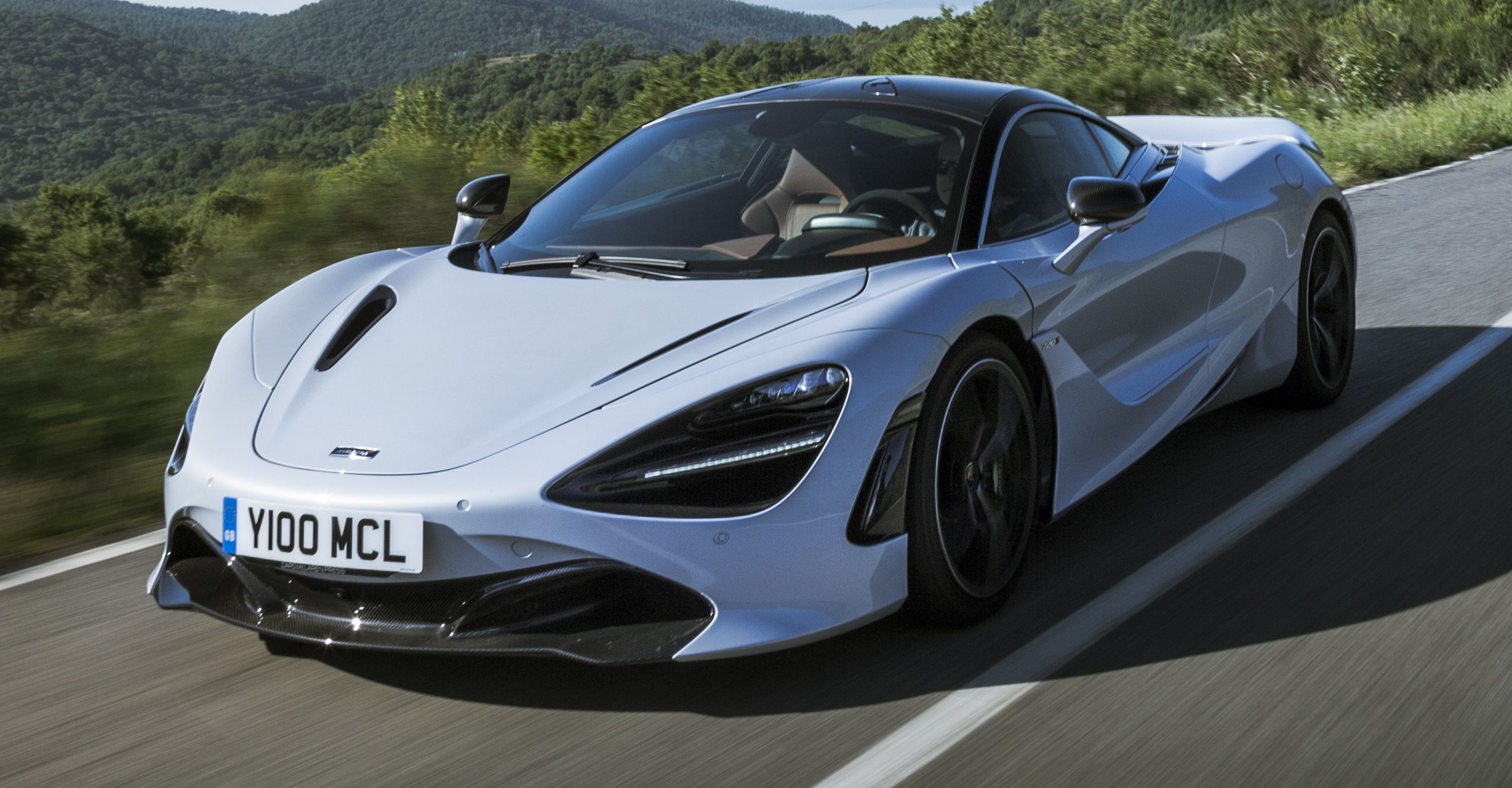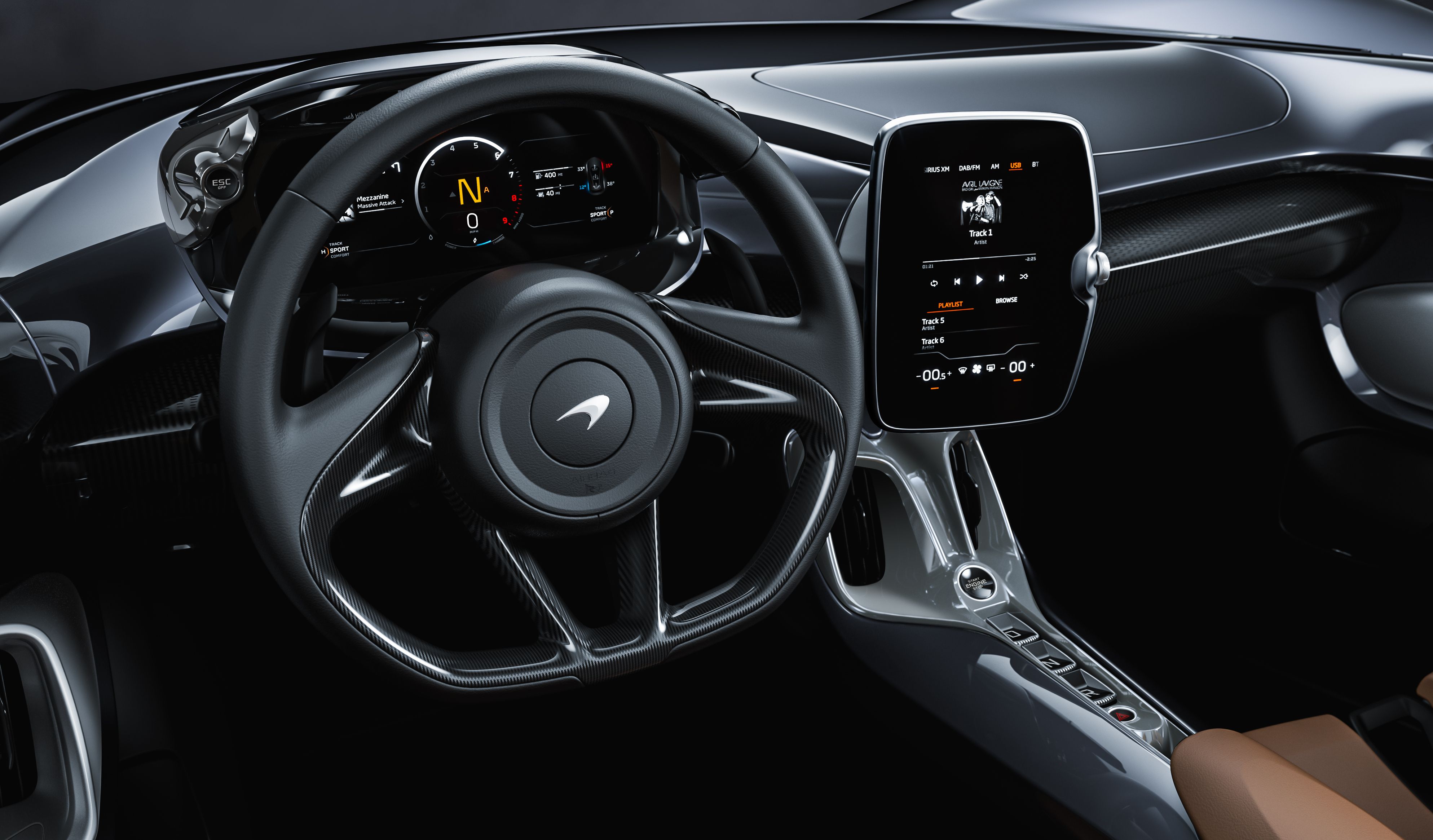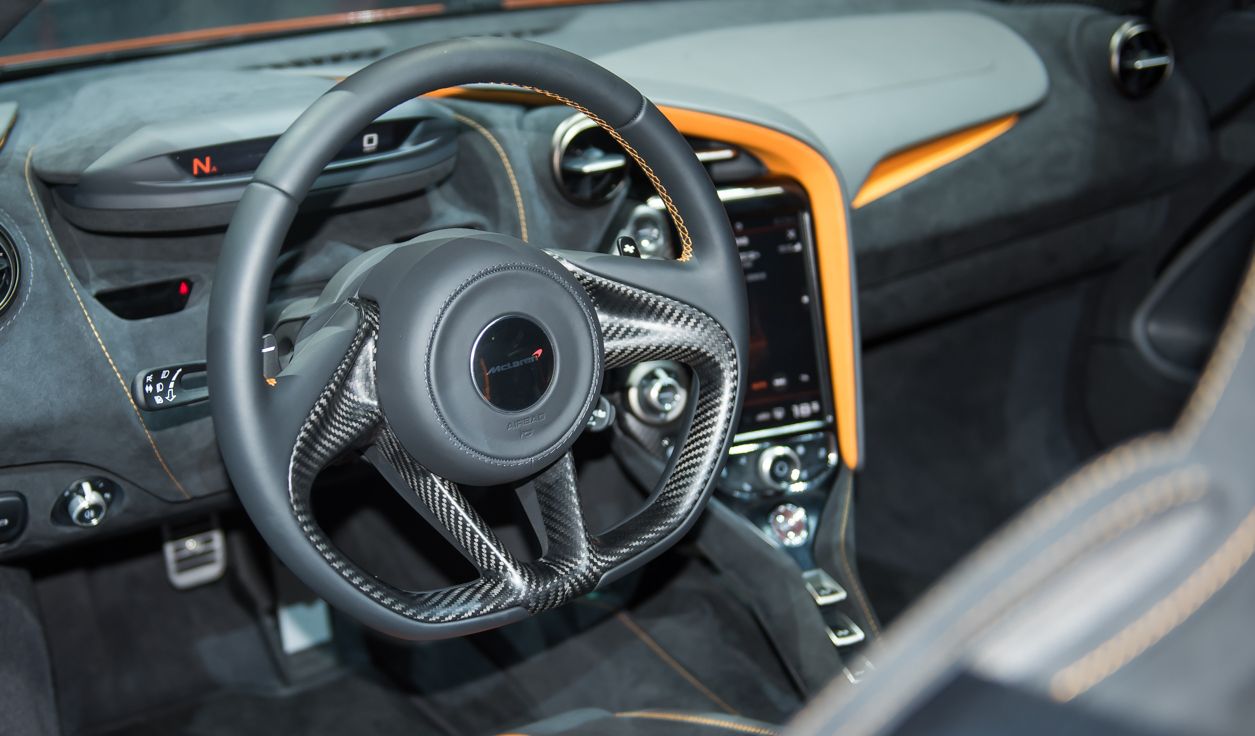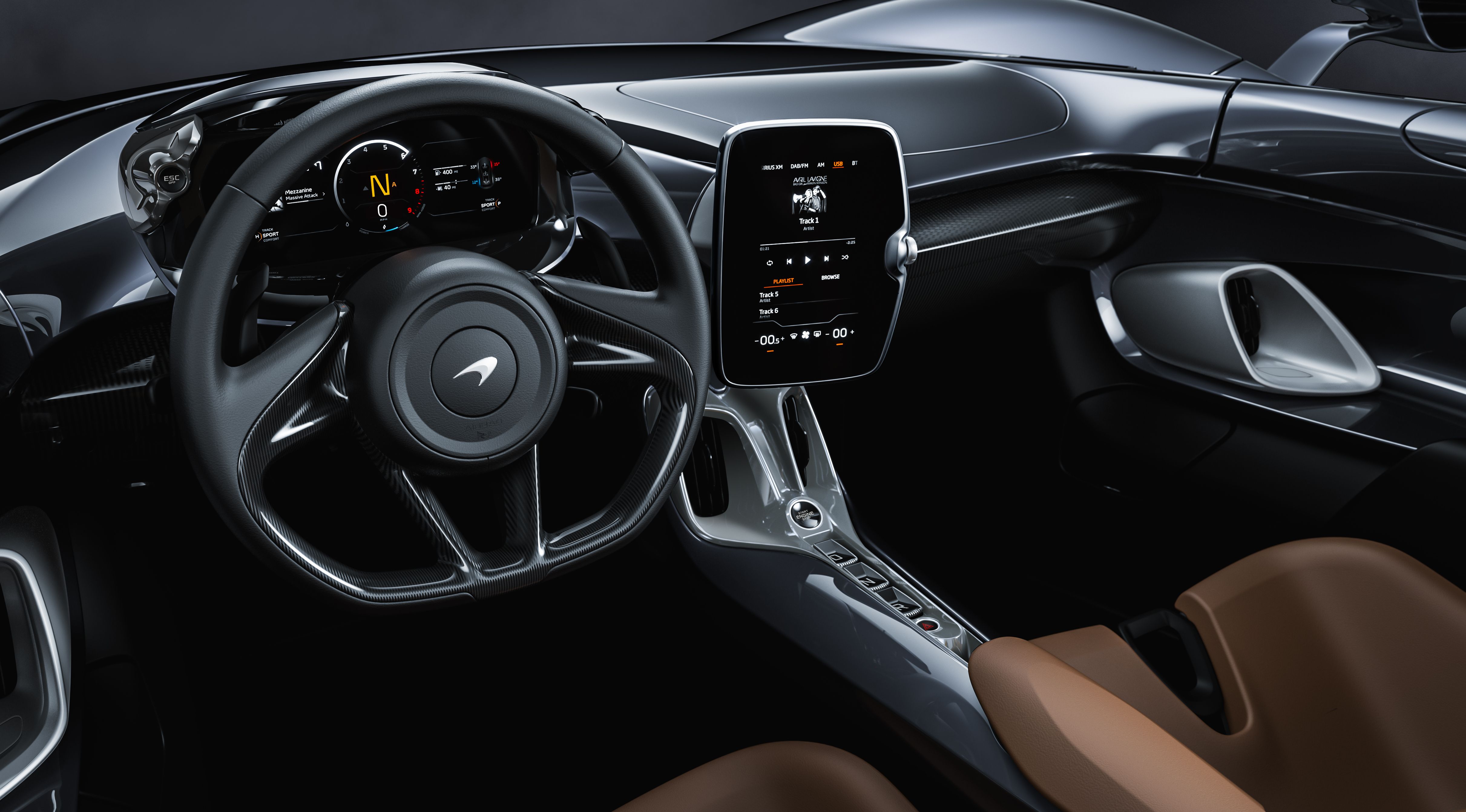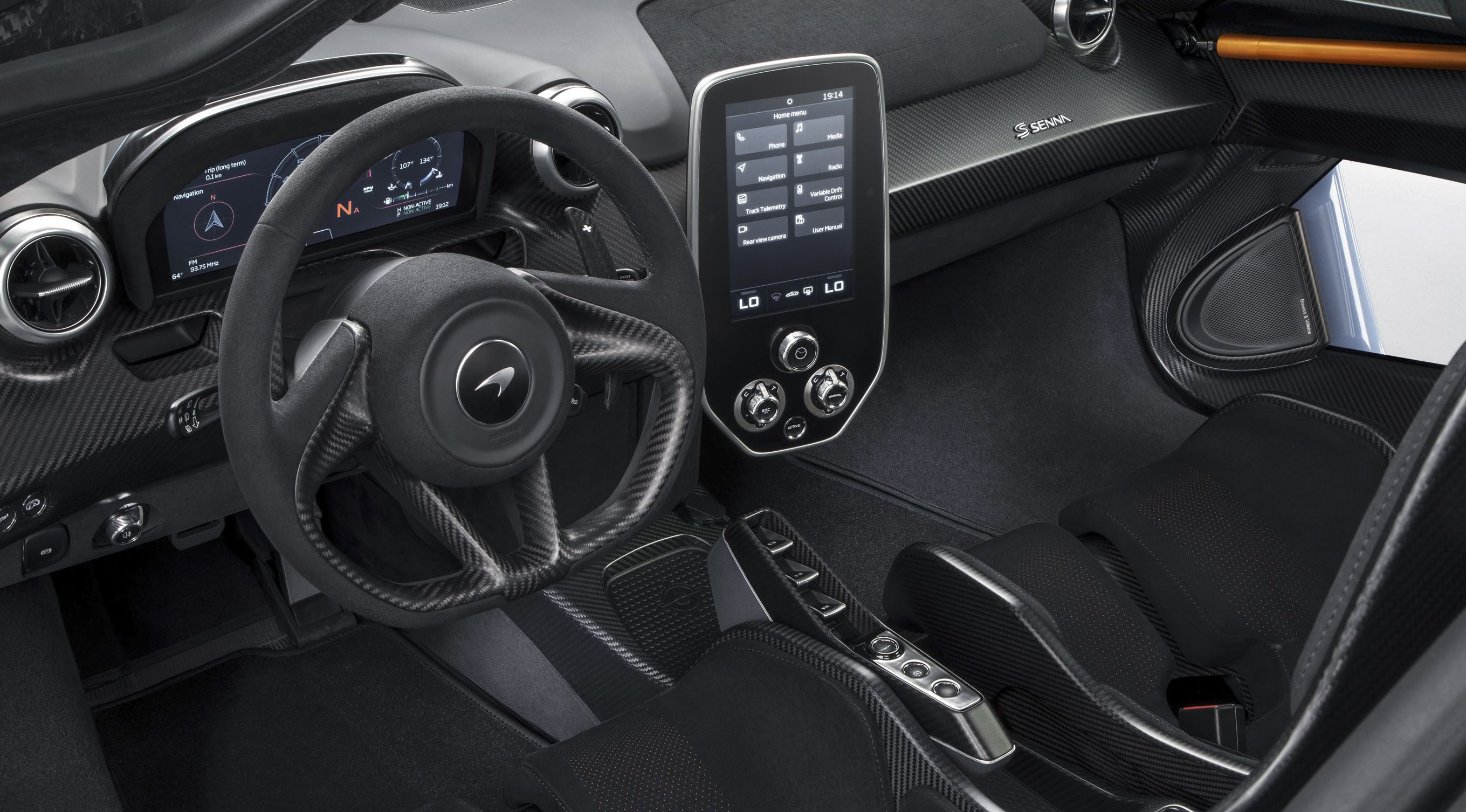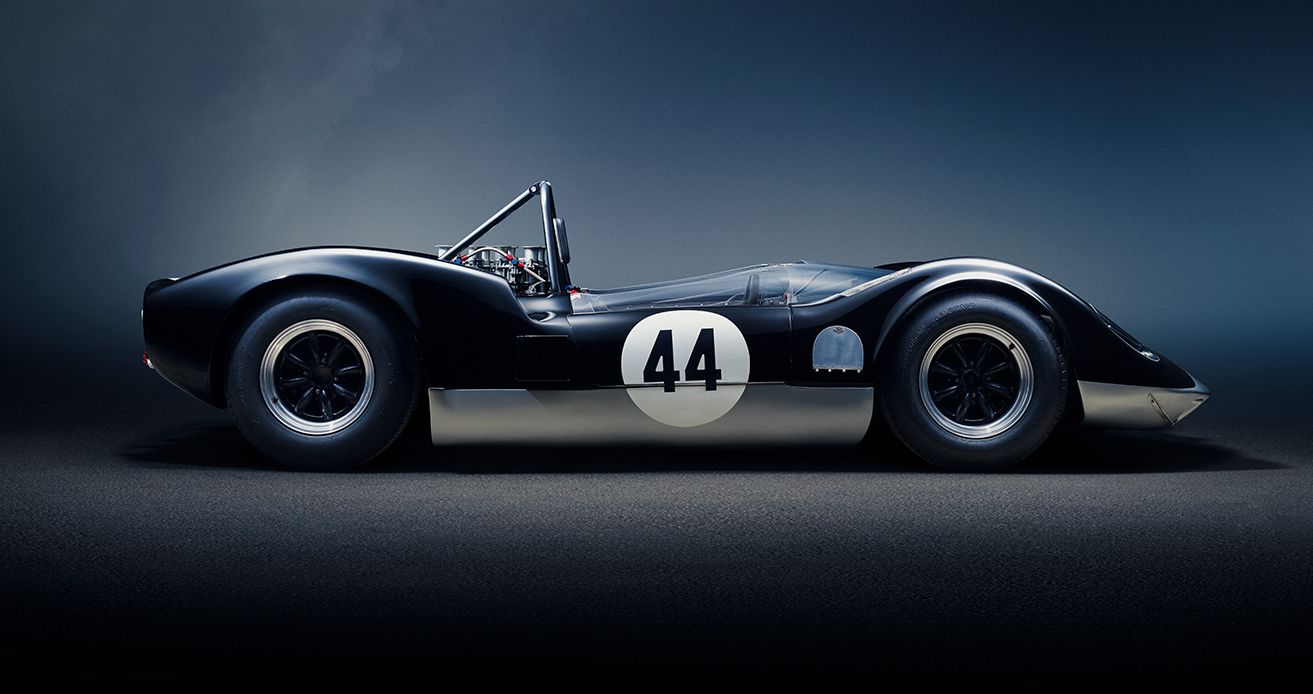The 2021 McLaren Elva is a brand-new supercar that the British firm added to its Ultimate Series lineup, alongside the Senna and the Speedtail. A two-seat open-cockpit design, it's inspired by a series of race cars built by Bruce McLaren in the 1960s under the McLaren-Elva name. It's McLaren's first open-cockpit road car and its lightest road-going vehicle yet. A track-ready roadster with an aerodynamic design, the 2021 Elva features the most powerful iteration of McLaren's twin-turbo, 4.0-liter V-8 engine. Rated at 804 horsepower, it slots above the Senna in terms of power and falls behind only the Speedtail hybrid. Let's find out more about this beast in the review below.
2020 McLaren Elva
- Make: Array
- Model: 2020 McLaren Elva
- Engine/Motor: V8
- Horsepower: 804
- Torque: 590
- [do not use] Vehicle Model: Array
2020 McLaren Elva Exterior
The front end is a cool mix between the two. The headlamps are based on the 720S, with thin lights extending into a C-shaped pattern into the bumper. The nose is also very McLaren-like as far as shape goes, but it reminds me of the original McLaren-Elva too. The lower fascia is shaped in a similar way, so it makes the nose look pointier than usual.
But things become much more modern toward the bumper, where the Elva features a large carbon-fiber splitter and integrated winglets toward the sides. The front fenders are more muscular than other McLaren's, a feature that also pays tribute to the 1960s race car. There's also a big vent in the front hood, just like on the classic racer. This feature is part of the Active Air Management System (AAMS), which helps create a "bubble" over the cabin to keep the driver and passenger safe from strong winds while driving without a windscreen.
Yes, like many classic roadsters, the Elva doesn't have a windscreen. But you can order one from the options list if you don't like the pure racing experience. McLaren won't offer side windows though.
The profile is impressively similar to the old McLaren-Elva race car. The fenders are just as muscular, while the rear ones feature big vents mounted behind the doors. These outlets feed air into the mid-mounted engine. But the beltline is a tad higher, which is specific to modern sports cars, while the character line that runs between the wheel arches features an arched shape. The heavily sculpted side skirts also set the Elva apart from its predecessor and other McLarens in the lineup.
|
|
ids=871876,871877 |
no_overlay=false |
before_label=McLaren Elva |
after_label=McLaren 720S> |
The rear fascia borrows a lot from the 720S. The engine hood is obviously different due to the integrated rollover hoops, but the taillights are just as thin, despite not having the 720S' arch. The grille is taller than the 720S, but the mesh is similar, while the high-mounted exhaust pipes have a similar position. It's the diffuser that's indeed unique to this car. It features four big flaps, two mounted closer to the edge and two flanking the license plate, with a pair of additional winglets mounted behind the rear wheels.
Like other McLaren's available right now, the Elva features an active rear spoiler. The aero element is seamlessly integrated into the rear deck when not in use, but it extends from the body when needed. The wing improved downforce at high speeds, but it also acts as an air brake, enhancing stopping power from high speeds.
The diffuser, the side skirts, and the splitter are all finished in bare carbon-fiber, but the entire body is actually made from the lightweight composite. Although the presentation model is painted, McLaren offers the option to have the entire body finished in transparent lacquer that shows the carbon weave.
|
|
ids=871089,871090 |
no_overlay=false |
before_label=McLaren Elva |
after_label=McLaren 720S> |
The McLaren Elva can also be personalized with 18-carat white gold or platinum badges that feature a thin-ply technology (TPT) carbon inlay. Introduced on the McLaren Speedtail as an automotive world-first feature, TPT is formed from multiple ultra-thin carbon layers just 30 microns in depth. These are then position at a 45-degree angle and milled until they expose a stratified, shimmering surface that resembles flowing water.
2020 McLaren Elva Interior
The upper sections of the carbon-fiber doors curve over and flow down into the cabin, the light, as does the dashboard that flows from the front hood. The buttresses behind the driver and passenger also flow into the cabin behind the seats, so there are no areas that clearly separate the outer shell from the interior.
Moving over to the design itself,
The center console is flanked by carbon-fiber seats developed specifically for the Elva. These feature a very aggressive, race-inspired design with solid lateral support and headrests integrated into the rollover hoops. The seats are made from a new lightweight carbon-fiber shell and the lower area is shorter than a conventional McLaren seat. Both contribute to a lower curb weight, while the latter allows more space within the footwells. You can order the seats with different upper and lower colors and material, so you can end up with a contrasting, two-tone design.
|
|
ids=871878,871879 |
no_overlay=false |
before_label=McLaren Elva |
after_label=McLaren 720S> |
Arguably the most exotic feature of the Elva is the Active Air Management System (AAMS). An innovative and industry-first system, it uses vents and deflectors to create a "bubble of calm" above the cockpit. In simpler terms, it reduces the disturbance created by the wind while driving at high speeds without a windscreen. How does it work? Well, the system basically channels air through the nose of the car to surface in front of the cabin at very high speeds. The air that enters through the large vent above the splitter exits through the outlets placed on the front hood. A discreet carbon-fiber deflector that raises almost six inches vertically to create a low-pressure zone.
The air is then directed through a 130-degree radius, using a network of transverse and longitudinally mounted carbon-fiber vanes across the hood outlet, in front of and along the side of the cabin. The high-speed flow prevents most of the air that hits the cabin at high speeds to go above or around the occupant area. It's like having an invisible roof. Sort of.
The AAMS system deploys automatically as you speed up, but you can also activate or deactivate it using controls inside the cabin.
|
|
ids=871880,871881 |
no_overlay=false |
before_label=McLaren Elva |
after_label=McLaren Senna> |
2020 McLaren Elva Drivetrain
Like all road and race McLarens since 1981, the Elva features a carbon-fiber monocoque at its core. This state-of-the-art tub is related to those found in the Senna and 720S, but it has been redesigned to work better with the car's open-cockpit design. Because it doesn't require additional strengthening, as it would be the case with a car built from aluminum and steel, this rigid carbon tub is ideal for a vehicle like the Elva.
Power comes from a twin-turbo, 4.0-liter V-8 engine. A familiar mill, it also motivates the Senna, the 720S, and the Speedtail, and it's essentially a slightly bigger version of the 3.8-liter unit that McLaren introduced a few years ago. Just like the carbon tub, the V-8 has been revised specifically for this car.
The twin-turbo powerplant now features an optimized exhaust system with reduced back pressure, improved LTR performance that reduces charge air temperature, and revised internals. The result is a notable increase in power that turns this V-8 into the most powerful iteration of the 4.0-liter mill. Specifically, the engine cranks out 804 horsepower and 590 pound-feet of torque.
That's more than any other McLaren powered by the same engine. The 720S, for instance, comes with 710 horsepower and 568 pound-feet, a 94-horsepower and 22-pound-foot deficit. Amazingly enough, the Elva delivers more oomph than the insane Senna as well. Granted, the two supercars have similar torque figures at 590 pound-feet, but the Senna's 789-horsepower rating puts it 15 horses below the Elva. It's not much, but the Senna seemed hard to beat without a hybrid drivetrain.
Speaking of which, the 4.0-liter V-8 in the Speedtail generates 746 horsepower and 590 pound-feet. Again, the torque figure is identical to the Elva, but the power rating is 58 horses below the open-cockpit supercar. Luckily for the Speedtail, its electric motor keeps it the most powerful McLaren in production with a total output of 1,035 horsepower and 848 pound-feet. That's an extra 231 horses and 258 pound-feet, but all of it comes from an electric motor that the Elva doesn't have.
Despite being the most powerful non-hybrid McLaren, the Elva isn't the quickest when it comes to acceleration. The roadster hits 62 mph in three seconds, which is a tenth-second slower than the 720S and two tenths slower than the Senna. It may seen weird that the Elva, which is both lighter and more powerful than the 720S and Senna, is slower here, but the open-cockpit layout and specific aerodynamics take a toll on acceleration and top speed.
But there's a certain figure that the Elva can brag about.
McLaren has yet to reveal the car's top speed, but it's safe to say that it hits at least 200 mph. It won't go past the 217-mph mark, but a 210-mph top speed would be mighty impressive for a convertible without a windscreen.
The V-8 engine mates to a seven-speed automatic gearbox, just like the rest of the McLaren lineup, and a launch control function. The Elva is rear-wheel-driven, obviously. We don't know much about the suspension system, but McLaren says it features a "state-of-the-art, linked-hydraulic setup with unique software settings, bespoke springs and damper valving, and an electro-hydraulic steering for "the purest feedback."
Stopping power comes from sintered carbon-ceramic brakes, while the wheels are wrapped in Pirelli P Zero tires as standard. Optionally you can go for track-focused Pirelli P Zero Corsa rubber as a no-cost feature.
You can control the Elva through three different drive settings, Comfort, Sport, and Track. All three change the driving characteristics to suit your needs. You can also alter the level of available wheelspin and oversteer with three Electronic Stability Control (ESC) modes orVariable Drift Control (VDC).
2020 McLaren Elva Pricing
Interestingly enough, the Elva is more exclusive than the hardcore Senna, which is produced in 500 units. However, it doesn't surpass the Speedtail, limited to 106 examples, when it comes to rarity. When it comes to pricing, the Elva costs notably more than the Senna, priced from around $1 million. The Speedtail, on the other hand, is significantly more about, retailing from around $2.1 million.
2020 McLaren Elva Competition
Ferrari Monza SP1/Ferrari Monza SP2
The Monza SP1 and SP2 are a pair of limited-edition sports cars based on the 812 Superfast. Just like the Elva, they're inspired by classic race cars -- in this case the 750 Monza and 166 MM -- and feature a similar design with no windscreen and flying buttresses behind the seats. The cars are very similar on the outside, but while the SP2 is a standard two-seater, the SP1 has just a driver's seat, while the passenger section is covered with a lid, just like old-school race cars. Both are powered by the naturally aspirated 6.5-liter V-12 in the 812 Superfast, but upgraded to deliver 799 horsepower and 530 pound-feet of torque. That's five horses and 60 pound-feet less than the Elva, but the SPs are just as quick, needing three seconds to hit 62 mph. Fewer than 500 are expected to be produced with prices exceeding $1.7 million a pop.
Read our full reviews of the Ferrari Monza SP1 and Ferrari Monza SP2
Lamborghini Aventador J
The Aventador J was built as a one-off and showcased in 2012, so it's long gone, but it's another fine example of a regular supercar turned into a race-inspired speedster. The J in the name stands for Jota, in reference to the iconic Lamborghini Miura Jota. The J was identical to the regular Aventador under the skin, featuring the same V-12 engine rated at 690 horsepower. The supercar was sold for a whopping $2.8 million.
Read our story on the Lamborghini Aventador J.
McLaren Elva Background
The Elva may seem like a brand-new nameplate for McLaren, but it actually goes back to the 1960s, when Bruce McLaren was still designing and racing the company's cars. The McLaren-Elva, produced in three generations called the M1A, M1B, and M1C, was a customer race car built to Group 7 racing specification. A pioneering design for its time, it had a somewhat successful racing career and battled for glory against Lola and Chaparral in the 1966 Can-Am season. The McLaren-Elva eventually evolved in into the M6A and M8 cars that went on to dominate Can-Am from 1967 to 1971.
The McLaren-Elva was actually a cooperation with Elva, a small British company that built cars from 1955 and 1968. The McLaren-Elva was introduced at the 1066 Racing Car Show and was sold to customers with a choice of three engines, from Oldsmobile, Chevrolet, or Ford. With Elva defunct for more than 50 years now, it seems that McLaren acquired the trademark to use the name for a sports car. Despite being half a century old, the original Elva served as inspiration for the new Elva's design, while its engineering principles are still found in the road cars that McLaren produces today.
Conclusion
When it comes to road-going McLarens, every single sports car coming from the British firm can be described with a single term: spectacular. And following the introduction of the Senna, it seemed impossible that McLaren would deliver a better car anytime soon. But the British company outdone itself with the Elva, a sports car that opens a new chapter for McLaren. Not only lighter and more powerful than the Senna, the Elva is also a more radical take on the modern track-ready car. The barchetta-style bodywork offers the purest race car experience you can have, while the powerful V-8 ensures that you have access to supercar-specific acceleration. Of course, the carbon-fiber construction places the Elva in the same league as professional race cars and maybe a bit above the Senna thanks to its no-nonsense layout. It's the kind of car that makes you wonder about what crazy thing will McLaren think of next.

